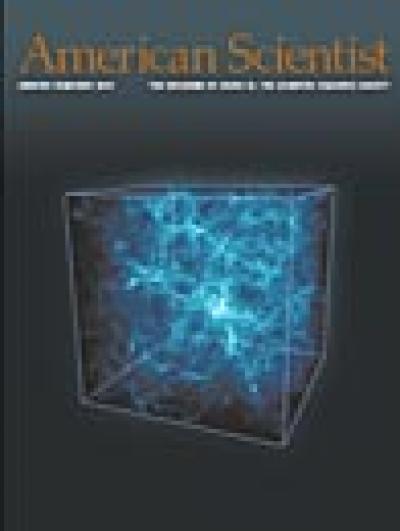Magazine
January-February 2004

January-February 2004
Volume: 92 Number: 1
A numerical simulation shows the distribution of dark matter when the universe was about one billion years old. Dark matter evolved quickly after the Big Bang, providing normal matter with the template to form the large-scale structure of the universe. In "The Cosmic Web," Robert Simcoe describes how astronomers use telescopes and computers to understand the intergalactic medium and its interaction with the first stars and galaxies. The simulation box is about 16 million light-years across. (Image courtesy of Renyue Cen, Princeton University.)
In This Issue
- Agriculture
- Art
- Astronomy
- Biology
- Chemistry
- Communications
- Computer
- Engineering
- Environment
- Ethics
- Evolution
- Mathematics
- Physics
- Policy
- Psychology
- Sociology
- Technology
The Evolution of Jealousy
Christine Harris
Anthropology Evolution Psychology
Did men and women, facing different selective pressures, evolve different "brands" of jealousy? Recent evidence suggests not
Human Biomonitoring of Environmental Chemicals
Ken Sexton, Larry Needham, James Pirkle
Biology Chemistry Environment
Measuring chemicals in human tissues is the "gold standard" for assessing people's exposure to pollution
The Cosmic Web
Robert Simcoe
Astronomy Computer
Observations and simulations of the intergalactic medium reveal the largest structures in the universe
Ancient Earthquakes at Lake Lucerne
Michael Schnellmann, Flavio Anselmetti, Domenico Giardini, Judith McKenzie, Steven Ward
Physics
A recent survey of the sediments beneath a Swiss lake reveals a series of prehistoric temblors
Scientists' Nightstand

Under Mount Melbourne
Environment Excerpt Scientists Nightstand
An Excerpt from End of the Earth: Voyages to Antarctica, by Peter Matthiessen

Ad Astra per Aspera
Kathryn Sullivan
Communications Sociology Review Scientists Nightstand
A former astronaut discusses three recent books about the challenges faced by women who have reached for the moon